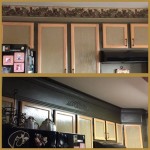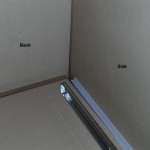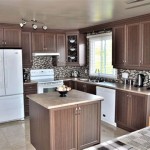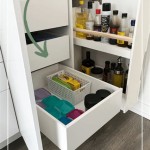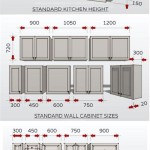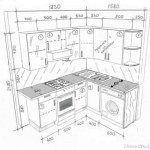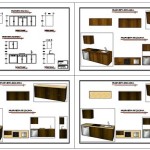```html
Kitchen Cabinet Financing: A Comprehensive Guide
Remodeling a kitchen is a significant investment, and often, the biggest portion of that investment is allocated to kitchen cabinets. New cabinets drastically alter the appearance and functionality of a kitchen, increasing both its aesthetic appeal and its overall value. However, the cost of quality cabinets can be prohibitive for some homeowners. This is where kitchen cabinet financing enters the picture, offering various avenues to make this crucial home improvement project more attainable. Understanding the available financing options, the associated costs, and the eligibility requirements is essential for making informed decisions and securing the best possible financing arrangement.
The total cost of kitchen cabinets depends on several factors, including the size of the kitchen, the materials used in the cabinet construction, the style of the cabinets (stock, semi-custom, or custom), and whether installation is included. Replacing existing cabinets can range from several thousand dollars to tens of thousands. Because it represents a substantial financial commitment, careful planning is a must.
Understanding the Common Kitchen Cabinet Financing Options
Several financing options are available to homeowners looking to upgrade their kitchen cabinets. Each option has its own advantages and disadvantages, along with differing interest rates, repayment terms, and eligibility criteria. Let's explore some of the most common approaches:
Personal Loans: Unsecured personal loans are a popular choice for funding home improvement projects. These loans do not require collateral, meaning the borrower does not need to put up any assets as security. The loan amount is typically determined by the borrower's credit score, income, and debt-to-income ratio. Interest rates on personal loans can be higher than secured loans, particularly for borrowers with less-than-perfect credit. The repayment term is usually fixed, providing predictable monthly payments. Because they are unsecured, a strong credit history is often required to secure a favorable interest rate.
Home Equity Loans: Home equity loans are secured loans that allow homeowners to borrow against the equity they have built up in their homes. The loan amount is typically a percentage of the home's value, minus the outstanding mortgage balance. Because the loan is secured by the home, interest rates are generally lower than unsecured personal loans. However, failure to repay the loan could result in foreclosure. Home equity loans usually have a fixed interest rate and a fixed repayment term, making budgeting easier. They offer larger borrowing amounts compared to many other options.
Home Equity Lines of Credit (HELOCs): Similar to home equity loans, HELOCs also leverage a homeowner's equity. However, instead of receiving a lump sum, the borrower gains access to a revolving line of credit. They can borrow funds as needed, up to a specified credit limit, during the draw period. Interest is charged only on the amount borrowed. HELOCs typically have variable interest rates, meaning the rates can fluctuate with market conditions. This can make budgeting more challenging than with a fixed-rate loan. During the repayment period, borrowers must make payments on the outstanding balance. The flexibility of a HELOC makes it attractive for projects where the total cost is uncertain.
Credit Cards: While using credit cards to finance kitchen cabinets might seem convenient, it is generally not recommended unless the borrower can pay off the balance quickly. Credit cards typically have high interest rates, especially for balances carried over from month to month. However, some credit cards offer introductory 0% APR periods, which can be a viable option if the borrower can repay the full amount before the promotional period ends. Credit card rewards programs can also provide some benefits, but these benefits are unlikely to outweigh the high interest costs if the balance is not paid in full.
Retailer Financing: Some kitchen cabinet retailers offer their own financing options to customers. These financing programs may include deferred interest plans or promotional rates. However, it is crucial to carefully review the terms and conditions of these offers, as they may include hidden fees or high interest rates that kick in after the promotional period expires. Thoroughly understanding the fine print is essential to avoid unexpected costs.
Government Programs: In some cases, government programs such as the Federal Housing Administration (FHA) Title I loan program may be available to help homeowners finance home improvements, including kitchen cabinets. These programs typically have specific eligibility requirements and may require compliance with certain guidelines.
Key Considerations Before Securing Kitchen Cabinet Financing
Before committing to any financing option, several factors need to be considered. Careful planning and research are crucial for making the best decision for individual financial circumstances:
Credit Score: A strong credit score is essential for securing favorable interest rates and loan terms. Borrowers should check their credit reports and address any errors or inaccuracies before applying for financing. Improving a credit score, even slightly, can significantly impact the interest rate offered.
Interest Rates: Comparing interest rates from different lenders is crucial for finding the most affordable financing option. Even a small difference in interest rates can save a significant amount of money over the life of the loan. Consider both the APR (Annual Percentage Rate), which includes all fees and costs associated with the loan, and the nominal interest rate.
Repayment Terms: The length of the repayment term will affect the monthly payment amount and the total interest paid over the life of the loan. A shorter repayment term will result in higher monthly payments but lower total interest costs, while a longer repayment term will result in lower monthly payments but higher total interest costs. Choose a repayment term that aligns with your budget and financial goals.
Fees and Costs: In addition to interest rates, various fees and costs may be associated with the financing option. These may include origination fees, appraisal fees, closing costs, and prepayment penalties. It is essential to understand all the fees involved before committing to a loan.
Budget: Develop a detailed budget that outlines all the costs associated with the kitchen cabinet project, including the cost of the cabinets themselves, installation costs, and any other related expenses. Ensure that the monthly loan payments fit comfortably within this budget.
Loan Amount: Determine the precise amount of financing needed to cover the cost of the kitchen cabinets and any associated expenses. Avoid borrowing more than is necessary, as this will increase the total interest paid over the life of the loan.
Weighing the Pros and Cons of Each Financing Option
Each kitchen cabinet financing option possesses unique advantages and disadvantages that must be carefully evaluated:
Personal Loans:
- Pros: Unsecured, meaning no collateral is required. Relatively quick approval and funding process.
- Cons: Higher interest rates compared to secured loans, especially for borrowers with less-than-perfect credit. Lower borrowing limits compared to home equity loans.
Home Equity Loans:
- Pros: Lower interest rates compared to unsecured personal loans. Fixed interest rates and repayment terms, making budgeting easier. Larger borrowing amounts.
- Cons: Secured by the home, meaning failure to repay could result in foreclosure. Requires home equity. Appraisal fees and closing costs are often involved.
Home Equity Lines of Credit (HELOCs):
- Pros: Flexible access to funds. Interest is charged only on the amount borrowed. Can be used for ongoing projects.
- Cons: Variable interest rates, which can fluctuate. Secured by the home, meaning failure to repay could result in foreclosure. Requires home equity.
Credit Cards:
- Pros: Can be convenient for small purchases. Some cards offer introductory 0% APR periods. Reward programs.
- Cons: High interest rates if the balance is carried over. Can negatively impact credit score if not managed responsibly.
Retailer Financing:
- Pros: Can be convenient. May offer promotional rates or deferred interest plans.
- Cons: Terms and conditions may be complex. High interest rates may kick in after the promotional period expires.
Government Programs:
- Pros: May offer lower interest rates or more favorable terms. Can be helpful for low-income homeowners.
- Cons: Strict eligibility requirements. May require compliance with certain guidelines.
Ultimately, the best kitchen cabinet financing option will depend on the borrower's individual circumstances, including their credit score, income, home equity, and financial goals. Careful research and comparison of different offers are essential for making an informed decision. Consulting with a financial advisor can provide personalized guidance and help navigate the complexities of kitchen cabinet financing.
```
Financing Kitchen Liquidators

Kitchen Cabinet Financing Kbc Direct Cabinets

Kitchen Cabinet Financing With Affirm Kings

Kitchen Cabinet Financing Top Cabinetry

Financing A Kitchen Remodel Even With Low Credit Score Gbc And Bath

How To Get A 10 000 Kitchen On 2500 Budget

How Much Can You Save With Zero Percent Financing

0 Down Payment Financing Available For Renovation Projects

Frequently Asked Questions Viking Kitchen Cabinets

Financing Granite Countertops Custom Cabinets Hardwood Flooring
Related Posts

